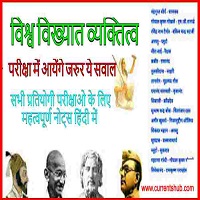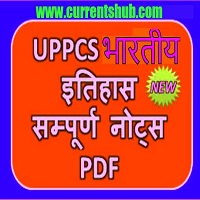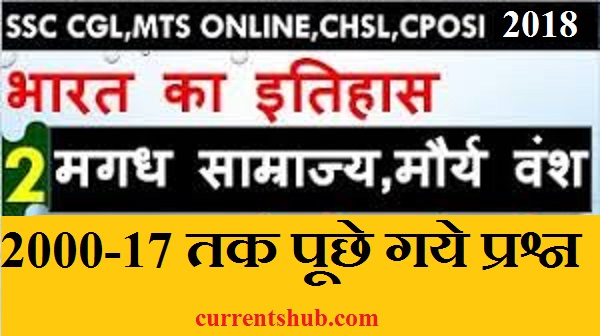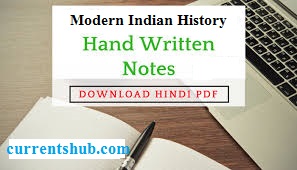
अनुक्रम (Contents)
The Indus Valley Civilization History, Location, Map, Art, & Facts …
The Indus Valley Civilisation
Introduction
The Indus Valley Civilisation is one of the oldest civilizations of the world. The Indus civilization stands tall amongst other civilizations of the ancient world such as Mesopotamian, Egyptian and Babylonian.
One of the most advanced civilization, famous for its “Town Planning and Drainage system and the use of Brick kiln”
Historical Research
Sir Alexander Cunningham (First Director General of Archaeological Survey of India) visited the site twice in 1853 and in 1856 and recorded a chain of mounds. Later in early 1920 Sir John Marshal the then Director General of ASI and his team made a great discovery The Indus Valley Civilisation along with its two major cities Harappa and Mohenjodaro in 1921 and 1922 by Daya Ram Sahni and R.D.Banerji. It placed India along with other great civilizations of the world.
Chronology
The dates mentioned by various scholars based on their own research and findings are as follows:
Sir John Marshall are of the view that the occupations at Mohenjodaro falls between 3250 and 2750 BC.
MS Vats who had excavated Harappa in 1921-31 are of the view that Harappa was before than those were at Mohenjodaro. He suggested the time period of 3500-2500 B.C
JP Joshi’s excavations at Surkotada added new data to the list. He divided the time period into three sub periods: 2480 to 2300 BC; 2290 to 2140 BC; and 2130 to 2020 BC. According to him the Mature period was between 2550 to 2050 BC.
Important Towns and Cities
(1)Major Cities
The biggest settlements were made at Harappa, Mohenjodaro and Dholavira . They were nucleus cities of the Indus valley civilization.
(a)Harappa
It was first discovered by Daya Ram Sahni in 1921. The site has a number of ruined mounds located in south west of the district of Montgomary (modern day Pakistan). Many authors are of the opinion that Harappa was a ‘Gateway City’ marking a meeting point of several routes. The city was a major link between the internal region and external world. Some important findings at Harappa include, a well preserved water reservoir linked with brick , a seal of ivory and a combination of three copper instruments, a sharp pointed awl, a double edged knife and a pair of surgical instruments.
(b)Mohenjodaro
It was first discovered by R.D.Banerji(1922) Sir John Marshall (1922-30)
S.M.Wheeler(1930-47).Mohenjodaro, literally means “mound of the dead” situated in Larkana district of Sind(Modern day Pakistan).It was the largest city of the civilization and along with Harappa have been hailed as the twin capitals of this great state . The most famous building of Mohenjodaro is “The Great Bath” a beautiful example of brickwork.It is a rectangular tank which measures 11.88m from north to south , 7 m broad and 2.43m deep. To the west of the Great Bath, there is a group of several blocks of bricks which is interpreted to be the podium of “Great Granary”. To the north and east of the Great Bath, there existed a long building considered to be” the residence of high officials”. There were a large number of artifacts found from this site. Around 1400 seals were discovered from this site along with copper bronze pottery, bull with elephant’s trunk, ram’s horns, stone lingam, terracotta seated figure of a women, seal of Indian Rhinoceros, etc.
Other important cities were
(1)Dholavira,
(2) Rakhigarhi,
(3) Chanhudaro,
(4)Surkotada,
(5)Kalibangan,
(6)Banawali,
(7)Ropar,
Town Planning
The most important feature of the Indus Valley Civilisation is its town planning and sanitation. It was made according to a fine architectural plan. All the important cities were divided into two parts- a fortified settlement on the high mounds highlighted as “citadels” and the main residential areas called “Lower towns”. All the important buildings were made of “kiln burnt bricks”. Example, Great Bath ,Great Granary, Assembly Hall etc.
Drainage System
The expanded drainage system is a unique feature of this civilization Down the streets and lanes ran a main drain 1 to 2 feet deep, covered with bricks provided with sumps and traps at regular intervals. Individual house drains opened into the streets drain which opened into great culverts emptying into the river. The extent of the drainage system and the quality of domestic bathing and drains are remarkable.
Life of the people
Political Life
Many scholars are of the view that the political system might have existed around 2500 BC. The political system of Indus valley is composed of several elite classes who controlled different regions of the Indus valley. It includes vestigial tribal structures, simple technologies, non monetary economies and unspecialized administrative structures. The integration during early Harappan period probably led to political integration. This includes the creation of a script, the introduction of new concept of planning along with the creation of a number of new cities.
Religious Life
The religious life of Indus Valley people was great. There were many artifacts found based on which it can be said that the people were religious and follows religious ceremonies. “Mother Goddess” is an important Female God. Among the male gods were a three faced diety wearing a horned head dress. Animal worship is a part of the religious belief indicated by the representations of animals on seals, terracotta etc. Tree worship was also in vogue.
Economic Life
The economy of Indus Valley people was completely based on agriculture , Cattle rearing, crafts and brisk trade both internal and external. Domestic and Wild animals were used for food. Apat from that cities like Harappa, Mohenjodaro and Lothal were important centers for metallurgy producing tools and weapons.The discovery of Harappan seals in many West Asian countries confirms the commercial contact of the Indus people.
The Decline
The decline of the Indus Valley Civilization is very controversial and still a great mystery. Many historians are of the view that during its late phase sometimes between 2000 and 1700 BC, the civilization came to an end. There were several causes which were added to its collapse such as climate, disease, invasion, flood etc.
कुतुबुद्दीन ऐबक Qutubuddin Aibak
फिरोजशाह तुगलक(1351 ई.-1388 ई.) – Firoz Shah Tughlaq History in Hindi
मोहम्मद बिन तुगलक (1325 ई.-1351 ई.) | Muhammad bin Tuglaq History in Hindi
गयासुद्दीन तुगलक (तुगलक वंश का संस्थापक) | Gayasuddin Tuglaq History in Hindi
अलाउद्दीन मसूदशाह Alauddin masudShah || History of masudShah
Bahramshah बहरामशाह का इतिहास || History of Bahramshah
Razia Sultan रजिया सुल्तान का इतिहास || History of Razia Sultan
सुल्तान रुकनुद्दीन फ़िरोज़ का इतिहास || History of ruknuddin firoz
इल्तुत्मिश का इतिहास | Iltutmish History PDF Download in Hindi
द्वितीय विश्व युद्ध क्यों हुआ था, इसके कारण व परिणामप्र
थम विश्व युद्ध के कारण,परिणाम,युद्ध का प्रभाव,प्रथम विश्व युद्ध और भारत
भारत के वायसराय की सूची एवं उनके कार्य PDF Download in Hindiदोस्तों Currentshub.com के माध्यम से आप सभी प्रतियोगी छात्र नित्य दिन Current Affairs Magazine, GK/GS Study Material और नए Sarkari Naukri की Syllabus की जानकारी आप इस Website से प्राप्त कर सकते है. आप सभी छात्रों से हमारी गुजारिश है की आप Daily Visit करे ताकि आप अपने आगामी Sarkari Exam की तैयारी और सरल तरीके से कर सके.
दोस्तों अगर आपको किसी भी प्रकार का सवाल है या ebook की आपको आवश्यकता है तो आप निचे comment कर सकते है. आपको किसी परीक्षा की जानकारी चाहिए या किसी भी प्रकार का हेल्प चाहिए तो आप comment कर सकते है. हमारा post अगर आपको पसंद आया हो तो अपने दोस्तों के साथ share करे और उनकी सहायता करे.
You May Also Like This
- सम-सामयिक घटना चक्र GS प्वाइंटर सामान्य भूगोल PDF Download
- भारत व विश्व का भूगोल ( Indian and World Geography ) बिषय से संबंधित सभी प्रकार की PDF यहाँ से Download करे
- सम-सामयिक घटना चक्र (GS Pointer) भारतीय राजव्यवस्था एवं शासन PDF
- सम-सामयिक घटना चक्र आधुनिक भारत का इतिहास PDF नोट्स हिंदी में Download
- सम-सामयिक घटना चक्र अतिरिक्तांक GS प्वाइंटर पूर्वालोकन सार सामान्य विज्ञान (भौतिक विज्ञान) PDF Download
- Chronicle IAS Academy notes HINDI AND ENGLISH MEDIUM
- Topper’s Notes For UPSC Civil Services Exam 2018
अगर आप इसको शेयर करना चाहते हैं |आप इसे Facebook, WhatsApp पर शेयर कर सकते हैं | दोस्तों आपको हम 100 % सिलेक्शन की जानकारी प्रतिदिन देते रहेंगे | और नौकरी से जुड़ी विभिन्न परीक्षाओं की नोट्स प्रोवाइड कराते रहेंगे |
Disclaimer: currentshub.com केवल शिक्षा के उद्देश्य और शिक्षा क्षेत्र के लिए बनाई गयी है ,तथा इस पर Books/Notes/PDF/and All Material का मालिक नही है, न ही बनाया न ही स्कैन किया है |हम सिर्फ Internet पर पहले से उपलब्ध Link और Material provide करते है| यदि किसी भी तरह यह कानून का उल्लंघन करता है या कोई समस्या है तो Please हमे Mail करे- currentshub@gmail.com







